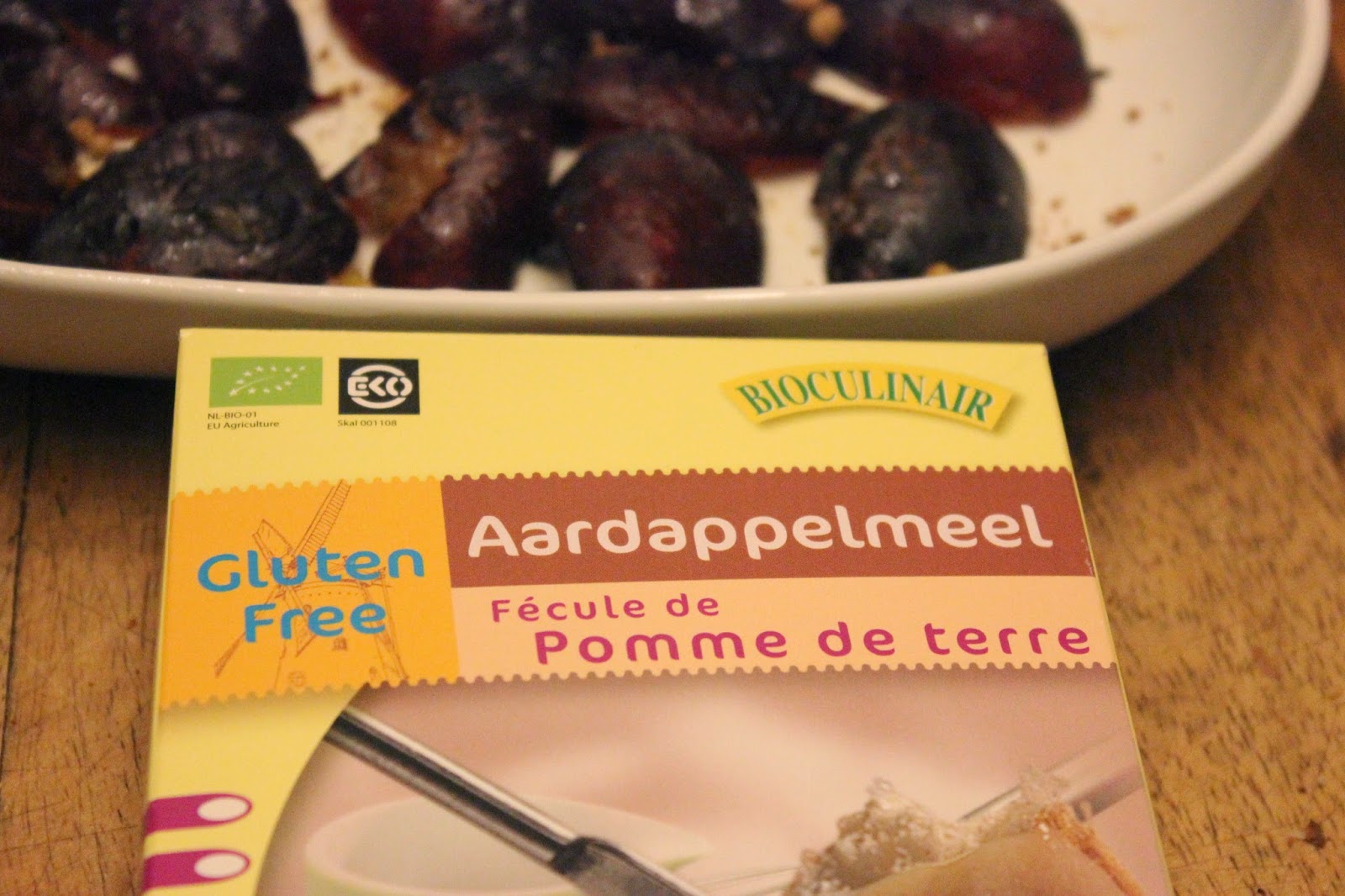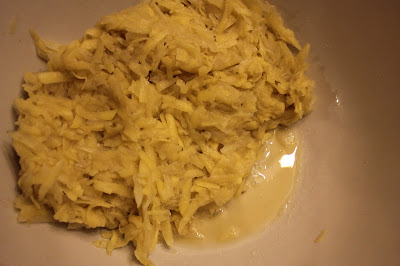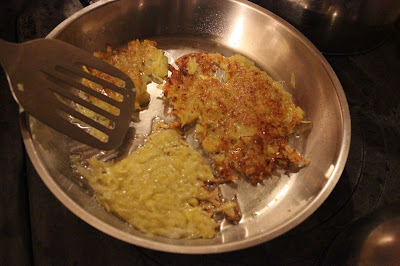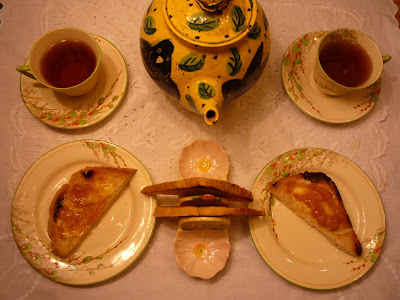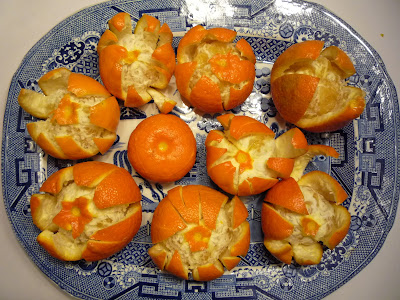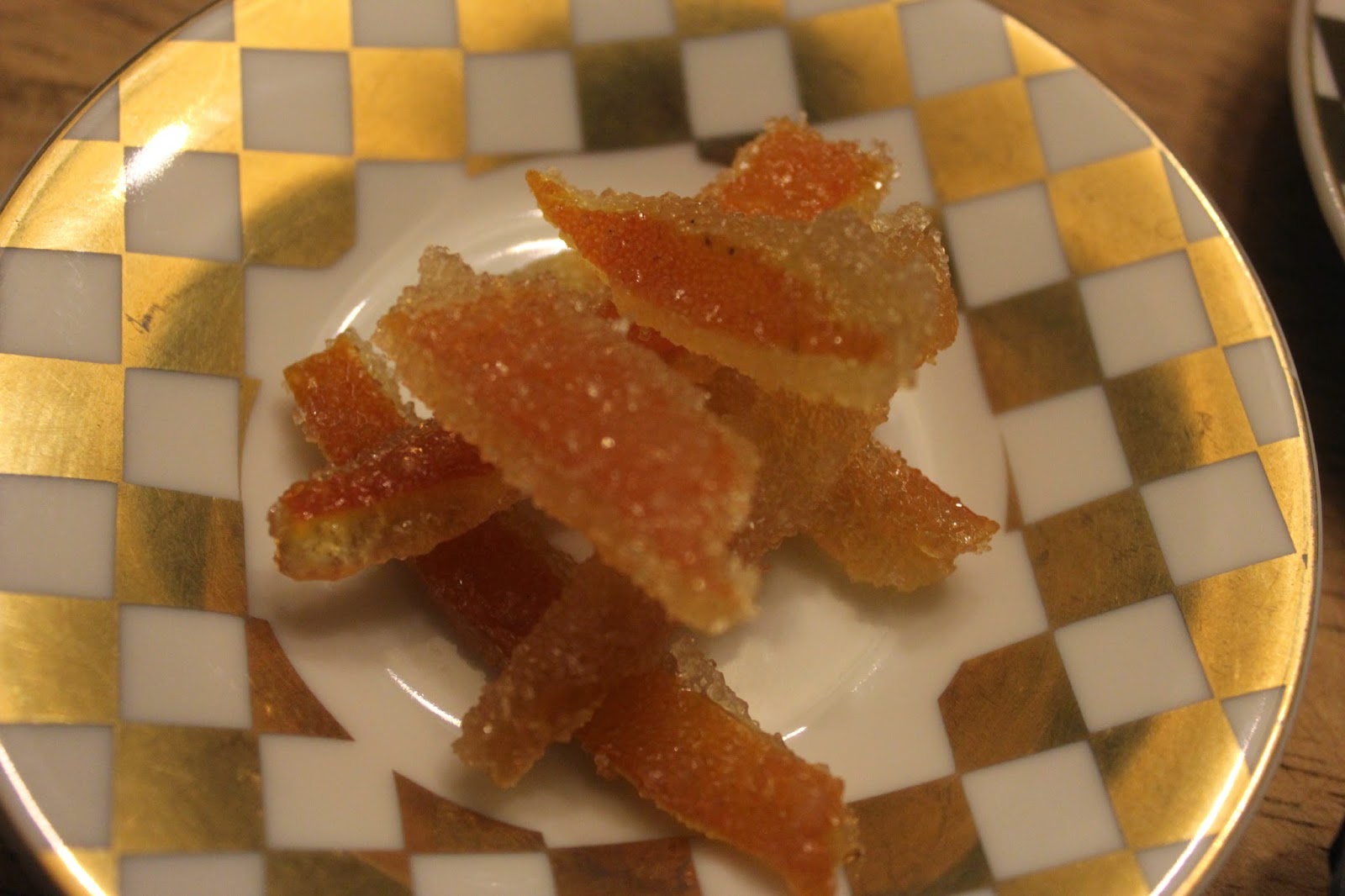A
clafoutis [pr. klafuti] is essentially a fruit tart without pastry, which comes from the Limousin region of France, famous for its enamels, porcelain and beef cattle. There are other
similar recipe regional desserts and probably as equally well-known is the far breton, which as Brittany is just around the corner from us here, I will be posting soon.
Although often made with cherries, a clafoutis can be made with a wide variety of fruits and also as a savoury dish. In the following recipe I'll be making a gluten-free version with some 'quetsch', which are large damson-like plums, these are from a friend's tree. I will also shortly be posting a savoury version of this recipe and one for small individual tarts. I will be making the latter with all purpose flour/plain flour but which obviously could also be made by following my gluten free recipe below or with your own favourite gluten-free choice for the flour.
I have eaten clafoutis on a couple of occasions in restaurants and have found it too sweet and heavy. That is because it is often made with non-traditional sweet cherries, in my opinion it needs the 'bite' that tart varieties of fruit can give. I also think it needs a really good whisking up when the milk goes in and I also believe a fine, light flour such as arrowroot helps to lift the batter. In addition, I thought the mix needed some 'fat' with which to carry the the flavours, although using raw Normandie dairy, helps a lot.
Although often made with cherries, a clafoutis can be made with a wide variety of fruits and also as a savoury dish. In the following recipe I'll be making a gluten-free version with some 'quetsch', which are large damson-like plums, these are from a friend's tree. I will also shortly be posting a savoury version of this recipe and one for small individual tarts. I will be making the latter with all purpose flour/plain flour but which obviously could also be made by following my gluten free recipe below or with your own favourite gluten-free choice for the flour.
I have eaten clafoutis on a couple of occasions in restaurants and have found it too sweet and heavy. That is because it is often made with non-traditional sweet cherries, in my opinion it needs the 'bite' that tart varieties of fruit can give. I also think it needs a really good whisking up when the milk goes in and I also believe a fine, light flour such as arrowroot helps to lift the batter. In addition, I thought the mix needed some 'fat' with which to carry the the flavours, although using raw Normandie dairy, helps a lot.
Plum halves to cover the bottom of dish
80g (3oz) of potato flour
20g (
¾oz) of arrowroot
80g (3oz) of sugar
300ml of milk (I use raw local creamy milk from Normandy cows)
2 eggs (or 4 bantam eggs)
2 eggs (or 4 bantam eggs)
1 table spoon of melted coconut oil or butter
50g (1
¾oz) of ground almonds
Optional - Rapadura (raw cane sugar) for sprinkling on the plums.
Cooking times
30 to 40 mins or until the top is well set and golden at 180°C or 350°FMethod
Butter your pie dish generously and place upon it, cut face downwards, the halves of plums with the stone removed. Use enough plums to cover the dish, I'm using a 25cm or 10" square, with an internal depth of 25mm or 1".
(Optional) Sprinkle with a little rapadura (raw cane sugar). This will give a little caramel touch to the plums, which are quite tart and I'm using less sugar in the batter than would be used traditionally.
Place all your dry ingredients in a bowl but keep back a little sugar for sprinkling on the clafoutis when it comes from the oven. Mix well.
Add the melted coconut oil (or butter) and mix again.
Make a well in the mix and add eggs, incorporate by bringing the dry ingredients gradually in towards the centre. You can do this by hand or with a beater if you wish. Beat well to obtain a smooth paste.
Add milk slowly, whisking all the time to obtain an homogeneous batter. This is a thin batter - do not worry!
Pour over plums and put immediately into the oven
When cooked the clafoutis will 'spring back' when you touch it with your finger tips and it will also be a beautiful golden brown.
The clafoutis can then be sprinkled with the remaining sugar just to give it a little crunch and extra texture. You can eat it straight from the oven, but I usually have some left over for the next day. I just store it on the window ledge, I do not have a fridge and I think it might go soggy if you were to put it in one, so a pantry or cool place would be best.
Hope you enjoy this dish, it is simple and yet an ode to the fine organic ingredients and succulent seasonal fruit.
Please feel free to comment, ask questions and share.
Hope to see you here again for another recipe from an old farmhouse in Normandie,
Sue
Return to 'WHAT'S ON THE MENU' for more Simply Organic Recipes
© 2014 Sue Cross



